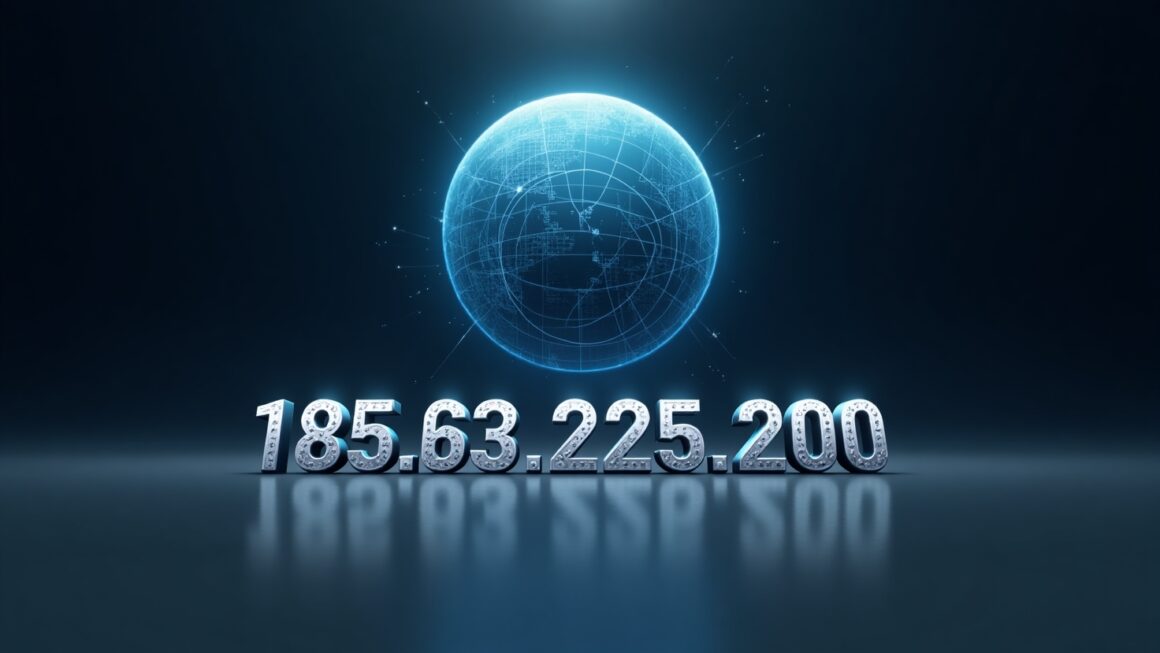What is 185.63.263.20?
The IP address 185.63.263.20 appears to be a standard IPv4 address used in digital networks. IP addresses like this one help route data across the internet, allowing communication between devices, websites, servers, and users. Every device that connects to the internet needs a unique address, and this IP is one such example.
However, it’s important to note that 263 is not a valid number in any part of an IPv4 address. Each section of an IPv4 address, called an “octet,” must be in the range of 0 to 255. Since 263 exceeds that range, the IP address 185.63.263.20 is technically invalid.
Still, for educational purposes, let’s explore what valid IP addresses in similar ranges typically represent and how they are used.
Understanding IPv4 Address Rules
IPv4 addresses use four numbers separated by dots. These numbers must each be between 0 and 255. So a correct IP address looks like 185.63.225.20 (instead of 263 in the third position).
Here’s how each part functions:
The first and second numbers often represent the network
The third number may refer to a subnet
The fourth number identifies the specific device
If one of the numbers exceeds 255, as in 185.63.263.20, then it violates the basic rules of IPv4. Most internet systems will reject or ignore it.
What to Do If You See an Invalid IP Like 185.63.263.20
Sometimes invalid IP addresses appear in logs, spam emails, or malware code. This could be due to typos or formatting errors, obfuscation in malware to confuse users, automatic generation of fake IPs for spoofing, or even just faulty software or misconfigured devices.
If you’re checking server logs and come across 185.63.263.20, it’s likely that the source address was either faked or miswritten. These types of entries should raise a red flag, especially in cybersecurity settings.
Valid IPs in the 185.63.x.x Range
Although 185.63.263.20 is invalid, the IP 185.63.0.0 to 185.63.255.255 is a real range allocated to organizations by regional internet registries like RIPE NCC in Europe. These IPs may belong to web hosting companies, VPN providers, private businesses, or educational institutions.
To investigate a similar IP, like 185.63.225.20, you can use WHOIS lookup tools or IP geolocation databases. These tools will tell you the country, organization, and type of usage for that IP block.
Common Reasons for Fake or Invalid IPs
Fake IP addresses often show up for several reasons, especially in spam emails, botnets, or DDoS attacks. Here’s why:
Avoiding tracking – Spammers might use invalid IPs to hide real sources
Obfuscation – Malicious scripts insert fake IPs to confuse security systems
Data corruption – Software bugs can produce bad logs
Testing – Developers may use dummy IPs in sample code
So, if your firewall or log contains 185.63.263.20, treat it as suspicious. It’s either a technical error or an intentional attempt to mask something else.
How to Identify Real vs Fake IPs
You can quickly tell if an IP is real or fake by checking each number:
All four numbers must be between 0–255
No part can include letters, symbols, or exceed the limit
Tools like IPVoid, AbuseIPDB, or MXToolbox will reject fake IPs
For instance:
185.63.150.20 is valid
185.63.263.20 is invalid
Real IP addresses can be traced and tested. Fake ones cannot.
Handling Suspicious IP Addresses in Security Logs
If a log entry shows a fake IP like 185.63.263.20, follow these steps:
Verify the IP – Use a tool like IP lookup or regex validation
Scan for malware – Invalid IPs might be a sign of a malicious script
Review logs closely – Look at surrounding entries for clues
Report anomalies – If you’re part of a team, escalate the report to IT security
Keeping track of invalid or spoofed IPs can help protect your system from being compromised.
Importance of IP Reputation in Cybersecurity
Even valid IPs can have a poor reputation. It’s important to check whether IPs like 185.63.225.20 (a similar valid one) are used for spamming, phishing attempts, or brute force login attacks.
Reputation services allow you to block high-risk IPs from accessing your services, create automatic alerts for blacklisted addresses, and maintain safe and secure web environments.
If you are running a server or website, always make sure to monitor for irregular IP access.
Tools for Checking IP Validity and Activity
There are many online tools to investigate IPs and track behavior. Popular tools include AbuseIPDB, IPVoid, WHOIS Lookup, Ping and Traceroute, and GeoIP Lookup.
These tools can help you determine if an IP like 185.63.225.20 is trustworthy or if it needs to be blocked.
Final Thoughts on 185.63.263.20
Although 185.63.263.20 is not a valid IPv4 address due to its third segment exceeding the limit, it still plays a role in understanding how IP formatting and validation works. Invalid IPs can be a sign of poor coding, fake logs, or even intentional obfuscation by cybercriminals.
Knowing how to recognize fake IPs is an important skill for webmasters, network administrators, and IT professionals. Make sure to use validation tools and IP lookup resources to stay on top of your digital security.
When working with IP addresses, always remember:
Check for formatting rules
Validate all addresses before trusting them
Stay alert for anomalies in traffic logs or security systems



